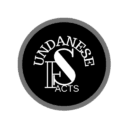A Grand Evolution of Tradition
Ronggeng Amen, a traditional dance rooted in Sundanese culture, has evolved into an elaborate artistic performance. This vibrant art form brings together a large ensemble of musicians and dancers, showcasing the rich cultural heritage of Pangandaran.
According to Rangga Rineka Pawa, affectionately known as Abah Dalang, a respected cultural expert in Pangandaran, Ronggeng Amen traces its origins to Ronggeng Gunung, a simpler yet equally enchanting form of traditional Sundanese art.
Introducing the Vibrant Ronggeng Amen Dance from Pangandaran
On a magical evening in Pangandaran, the harmonious blend of gamelan, kendang, and goong, accompanied by the soothing melodies of the kecapi, filled the air with life. A man dressed in black, draped in a traditional sarong, confidently stepped onto the stage, setting the scene for an unforgettable performance.
As the music intensified, six men wearing sarongs moved in a synchronized circle, their dynamic movements captivating the audience. They were soon joined by four graceful female dancers dressed in elegant red kebaya, their vibrant attire adding splashes of color to the performance.
At the heart of the stage, a sinden (traditional singer) stood, serenading the crowd with her soulful voice. Her heartfelt verses resonated deeply, complementing the dancers’ movements. Together, they brought to life the mesmerizing Ronggeng Amen dance, a traditional art form unique to Pangandaran Regency.
Unveiling the Origins of Ronggeng Amen
The story of Ronggeng Gunung begins in the Pangandaran Regency, deeply intertwined with local folklore and legends such as the “Babad Pananjung,” which chronicles the establishment of Tumenggung leadership.
“From the ‘Babad Pananjung – Ngadeg Tumenggung’ story, Ronggeng Gunung was born,” explains Abah Dalang. “Artists and cultural practitioners later refined it, adding musical instruments to transform it into the grand spectacle we now know as Ronggeng Amen.”
Today, this cultural legacy lives on in two distinct forms: the traditional Ronggeng Gunung and its modern counterpart, Ronggeng Amen.
Key Differences Between Ronggeng Gunung and Ronggeng Amen
Ronggeng Gunung relies on a simpler musical ensemble, featuring instruments like kendang, ketuk, and kempul. Meanwhile, Ronggeng Amen elevates the experience with a more extensive range of instruments, making it ideal for grand performances that go beyond traditional welcoming ceremonies.
In terms of choreography, Ronggeng Gunung highlights two iconic styles: Jaipong and Pencak Silat movements. These styles seamlessly blend traditional Sundanese martial arts and dance, creating a captivating visual experience.
While Ronggeng Gunung often graces exclusive events such as state visits or government ceremonies, Ronggeng Amen has found a place in broader cultural celebrations and festivals.
Bringing Tradition to Modern Events
Ronggeng Amen now plays a vital role in government events and cultural festivals throughout Pangandaran. It has become a symbol of the region’s artistic pride.
“Traditional Ronggeng Gunung is a must-see attraction at every government event in Pangandaran,” says Abah Dalang, a renowned wayang golek puppeteer in the area.
Male performers traditionally wear sarongs and the iconic Sundanese iket headpiece, a detail that has remained a hallmark of this cultural dance.
The Philosophy Behind the Movements
Every movement in the Ronggeng Amen dance and every rhythm in its music holds profound philosophical significance. For example, the synchronized circular movements of the dancers reflect unity and cooperation.
The dance embodies the Sundanese philosophy of Wirasa, Wirama, and Wiraga:
- Wiraga represents the physical movements of the dance.
- Wirama symbolizes the harmony between music and motion.
- Wirasa captures the emotional and symbolic essence of the performance.
“In Sundanese philosophy, it reflects ‘sareundeuk sabobot sapihanean,’ meaning unity, harmony, and mutual respect,” explains Abah Dalang. “For instance, when the movements turn inward, everyone follows inward, and when they move outward, everyone follows outward. This symbolizes an extraordinary philosophy of cooperation and togetherness.”
Celebrating a Cultural Legacy
Both Ronggeng Amen and Ronggeng Gunung continue to thrive as vibrant expressions of Sundanese culture. These artistic traditions preserve the rich heritage of Pangandaran and pass on timeless values of unity and harmony to future generations.
Let the dance and its melodies inspire us to celebrate the beauty of culture and community
Read More:
The Secret Behind West Java’s Peacock Dance: A Stunning Cultural Treasure You Can’t Miss!







